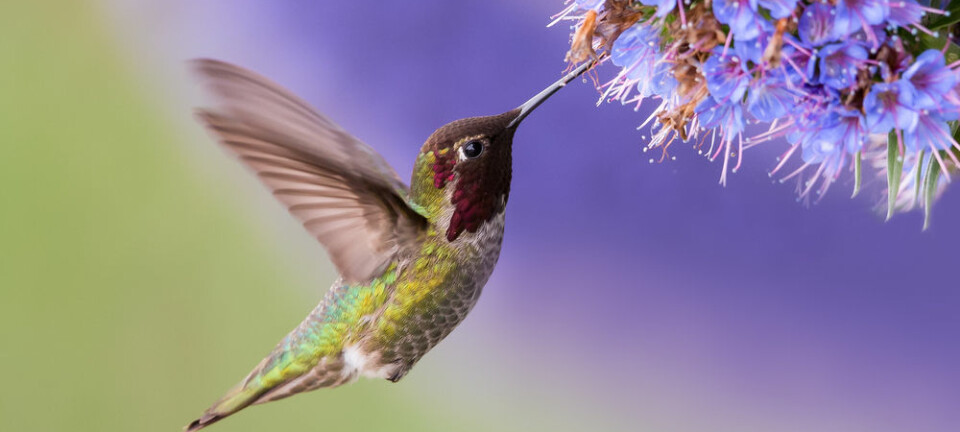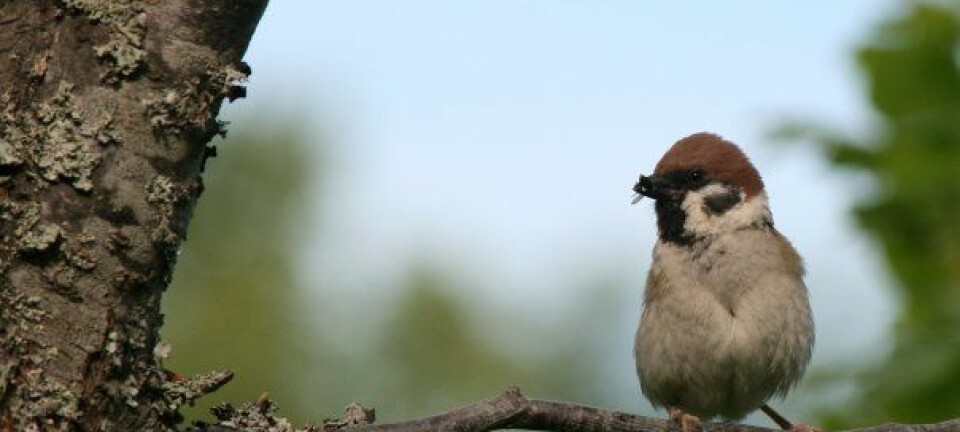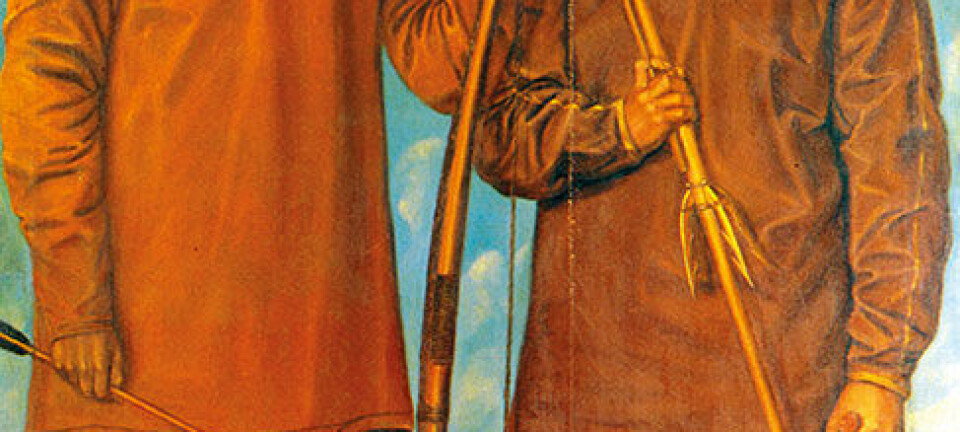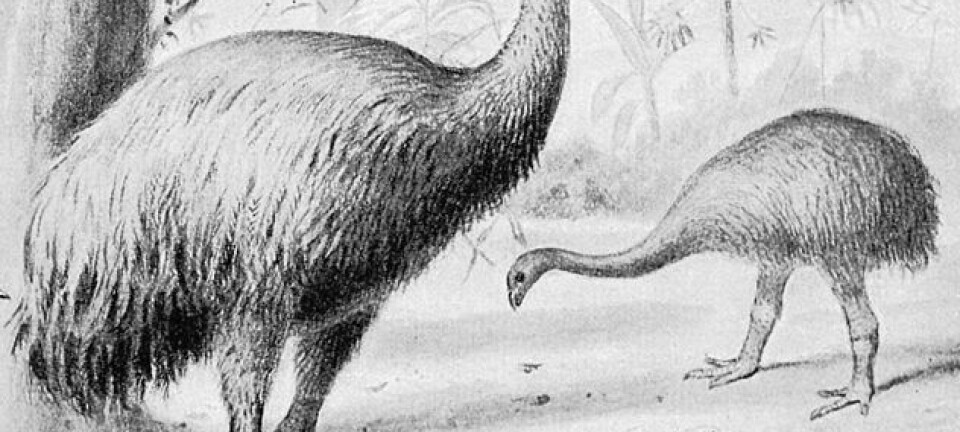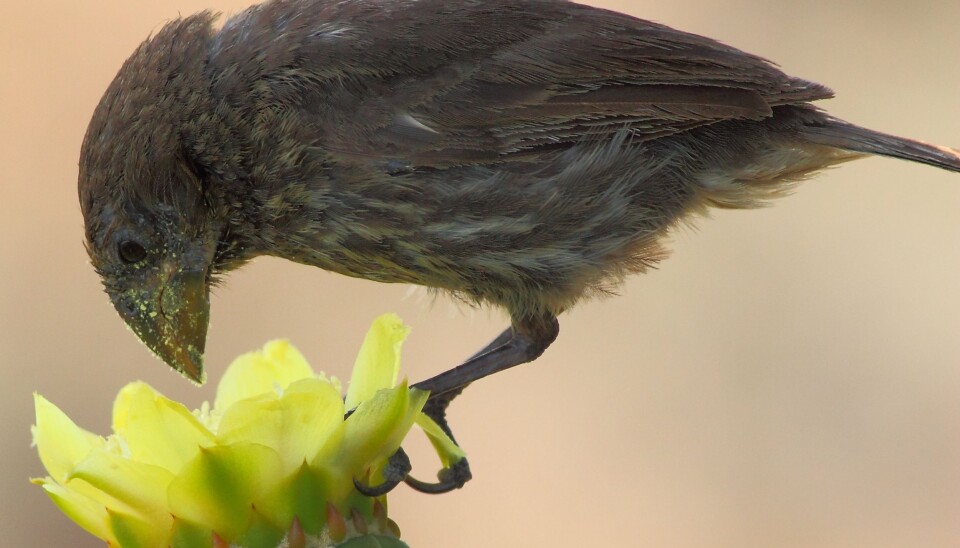
Birds on the Galápagos Islands have developed new eating habits
New study on the eating habits of birds on the Galápagos Islands have surprised scientists.
Some birds eat insects and others nuts and seeds, while others still drink nectar from flowers.
Each have their own food source which, over time, they have become specialists in finding and eating. That is certainly the usual perception of birds' eating habits.
But a new study has changed that. It shows that practically all the birds on the Galápagos Islands supplement their primary food source with nectar from flowers.
One of the scientists behind the study is Professor Jens Mogens Olesen of Aarhus University who has been studying the eating habits of birds on the Galápagos Islands together with his colleagues over the past couple of years.
"We met some scepticism when we submitted the manuscript for our article. People simply didn't believe it was possible. But it is -- the birds really do drink nectar," says Olesen.
Shortage of food causes birds to change eating habits
The Galápagos Islands lie 1000 km west of Ecuador in South America and this great distance to the mainland means that the islands have their own very unique fauna.
While there are many birds and reptiles, there are not that many mammals and amphibians compared to the mainland.
The problem for the birds is that there is a different combination of animals and especially prey, which forces them to dramatically change their eating habits, Olesen explains.
"The biology on these islands is completely different for instance to South America. We found flycatchers, among others, and they normally live off the insects they catch. There simply aren't that many insects here on the islands, which means that many of them have been forced to find other sources of food," he says.
But how can the scientists be so sure that the birds' eating habits have changed?
Pollen from the birds' beaks gave them away
Instead of monitoring flowers and plants around the clock, the scientists used a more efficient approach to their studies.
First, they caught the birds and wiped their beaks with lumps of gel. They then put the gel under a microscope to study it more closely.
Here they could see that almost all the birds at pollen on their beaks, from which they could deduce that plants were the birds’ source of food.
This part of the study involved an awful lot of work. Olesen explains that together with his colleagues caught several thousand birds and that some of the scientists’ sole job was to identify pollen.
Without readjustment the animals would die
The birds on the Galápagos Islands have changed their eating habits at a much faster rate than they thought was possible. Because they do not just eat familiar, common plants.
Much of the pollen the birds had on them stemmed from introduced species of plants which were new to the island.
"These birds are highly opportunistic and they change their behaviour as they go. They eat more or less anything they can get at. It was once believed that they were very vulnerable to disruption -- but that no longer holds true. If there’s a shortage of insects they simply eat something else,” says Olesen.
Mikkel Willemoes, a post-doc at the Natural History Museum of Denmark, agrees with him.
"It's odd that there are so many introduced species of plants in the Galápagos Islands. There has been no long-term specialised evolution. These birds are highly opportunistic and quick to adapt. They have to be on these islands. The species that survive are the ones that adapt to new conditions," says Willemoes.
Life on Pacific islands under threat
Olesen explains that in the future he would like to examine whether the findings made on the Galápagos Islands also apply to birds on other island groups -- especially in the Pacific where rising sea levels can drastically change island animals’ life.
"It could be interesting to take a look at islands in the Pacific. If parts of the animal network disappeared due to rises in sea level, will everything break down or will the animals find new ways to manage? Islands like the Galápagos Islands are unique as far as fauna is concerned -- you find species here that don't live anywhere else," says Olesen.
He is in the process of applying for funding to enable him continue his work.
--------------------
Read the original story in Danish on Videnskab.dk
Translated by: Hugh Matthews
